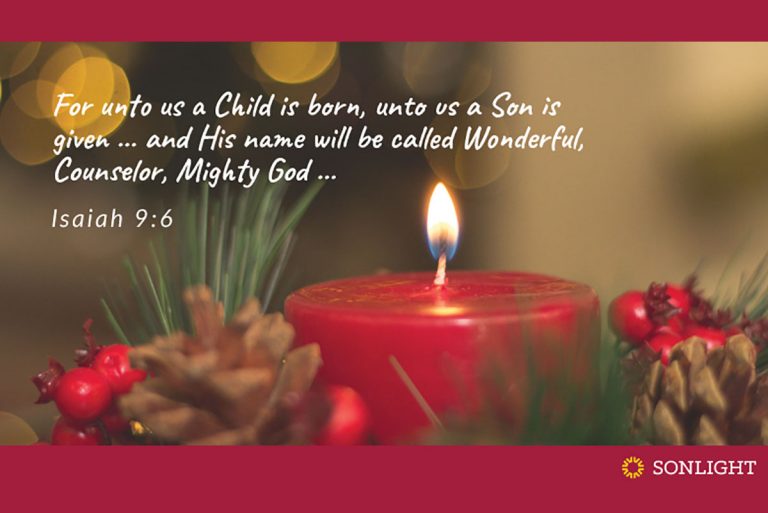Even if your faith tradition doesn't follow the liturgical Church calendar, it may enrich your family to add some elements of it to your home devotional life...especially as we approach the Christmas season.

Most nondenominational evangelical churches don't follow the liturgical calendar in its entirety, choosing instead to focus on a few key dates, namely Christmas and Easter. The liturgical calendar is an annual schedule that focuses on important dates and seasons in the birth, life, death, and resurrection of Jesus. Like the calendar of seasons, it is structured around distinct periods marking important moments with its own themes, characteristics, and practices, much the same way the natural seasons have distinct attributes. Both repeat annually at set times.
What is Advent?
Advent is the beginning of the Church Year. In order, the main seasons are divided into the following:
- Advent
- Christmas
- Epiphany
- Lent
- Holy Week
- Easter
- Pentecost
- Ordinary Time
Advent lasts for roughly four weeks beginning the fourth Sunday before Christmas leading up to Christmas Day on December 25. Since Christmas falls on a different day of the week each year, Advent can begin anywhere from November 27 to December 3. Advent is followed by twelve days of Christmas, culminating with the day of Epiphany. It is considered a time of preparation, remembrance, and anticipation.
Advent Versus Christmas
During the season of Advent, we prepare to celebrate Jesus’s first coming as a baby in Bethlehem, looking backward, remembering how Israel prepared for the long-awaited Messiah. We also look forward to Jesus’s second coming to bring peace on earth, longing for and expecting at any time Jesus’ return in glory.
Advent and Christmas often run together. In North America, people begin celebrating Christmas before it arrives because stores decorate for Christmas and play Christmas music hoping to boost the shopping season. Advent is designed to be more subdued in tone. It is a time of preparation that precedes the celebration so that we can reflect and meditate on the purpose of Christmas. The term advent comes from the Latin adventus, meaning coming or arrival.
If you decide to add a reflective tone to your holiday season, you may find that a quick internet search will produce an overwhelming list of creative ideas. As you decide what to add for your family, starting with something simple is always a good idea. Small, meaningful moments may not be instantly life-changing, but over time they can create a home culture focused on Jesus.
Build a tradition of celebration by daily slowing down to remember that we are called to be a different people than the hustle-and-bustle culture around us. Let this be a season of quiet faithfulness and reflection.
Let's consider five simple ways to celebrate Advent as a homeschool family.
1. Celebrate Advent with Readings & Discussions
The simplest way to honor Advent is a daily family time with a short reading and family discussion. So easy! And yet so meaningful!
Here is a free resource to help you intentionally celebrate Advent in preparation for the Christmas season: daily scripture readings and literature cards.
- Daily Advent readings —questions to encourage discussion within your family.
- Daily Christmas literature titles —wonderful books to enrich your enjoyment of the Christmas season.
If you want something a bit more robust, check out our Advent Unit Studies, written especially for families who aren't familiar with this practice but want to explore more. There are four to choose from and they center around Arnold Ytreeide's Jotham series, with some added reading, as well as crafts and recipes.
2. Celebrate Advent with an Advent Wreath
Anther simple time-honored tradition is to place an Advent wreath in your home and light the appropriate number of candles for the week during a daily family time. Pinterest is full of ideas for making an Advent wreath. It does not need to be complicated. Traditionally, you would use 3 purple candles, a pink one, and a white one, but if all you have is white, then go with white!
Each day, light the candle and read the scripture reading for the day. You can choose to add a few additional activities such as:
- singing an Advent song
- reading a story (for example from the literature cards)
- sharing highs and lows for the day
- marking the passing days with a countdown or calendar
Don’t overcomplicate it. Choose only one or two things to add; short and sweet is often best!
3. Celebrate Advent with Music
Advent music reflects the season’s emphasis on waiting and expectation, whereas Christmas music focuses on the joyful celebration of Christ’s arrival. Here is a short list of songs that would be appropriate for Advent:
- Come, Thou Long-Expected Jesus – Charles Wesley
- Hark, the Glad Sound! The Savior Comes – Philip Doddridge
- Imagine – Keith and Kristyn Getty
- Let All Mortal Flesh Keep Silence – Gerard Moultrie
- Love Divine, All Loves Excelling – Charles Wesley
- My Soul Cries Out with a Joyful Shout – Rory Cooney
- O Come, O Come, Emmanuel – ancient hymn
- Of the Father’s Love Begotten – Aurelius Clemens Prudentius
- Savior of the Nations, Come – Ambrose, 4th century; Martin Luther
- Soon and Very Soon – Andraé Crouch
Create your own playlist or follow ours and save Christmas songs for the 12 Days of Christmas (the period of time between December 25 and January 6).
4. Celebrate Advent with a Calendar
A calendar is a fun way for children to mark the days as they get closer to the day of celebration. Again, an internet search will reveal many creative ways to create your own calendar at home, and stores carry all sorts of them for purchase. An easy, inexpensive way is to create a chain of construction paper, one link for each day of Advent. Then each day, tear off a link of the chain for a visual reminder of how many days are left before the big day!
5. Celebrate Advent with a Jesse Tree
An alternative to the Advent Calendar is decorating a Jesse Tree. A Jesse Tree has special ornaments that represent a collection of scriptures that tell the overarching story of Jesus beginning at the beginning. Each day you read the scripture and place the ornament on the special Jesse Tree. A great resource is our newest Advent Unit Study that includes templates for creating your own.
However you choose to celebrate, may these weeks fill your home with joy and peace as we anticipate Christmas.








